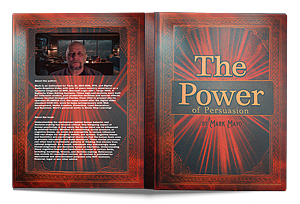Book Summary
“Business Model Generation” offers practical tools to understand, design, and implement a new business model — or analyze and renovate an old one. The book is designed for entrepreneurs, business leaders, and innovators who seek to defy outdated business models.
Title, Author: Business Model Generation: A Handbook for Visionaries, Game Changers, and Challengers by Alexander Osterwalder, Yves Pigneur
Key Ideas or Arguments Presented
- The book introduces the Business Model Canvas — a strategic management and entrepreneurial tool that provides a visual chart with elements describing a firm’s value proposition, infrastructure, customers, and finances.
- Traditional business plans are becoming obsolete. The dynamic nature of the business world now requires more visual and agile tools.
- Business models can and should be designed and managed, just like products or services.
Chapter Titles or Main Sections with Descriptions
1. The Business Model Canvas
- Introduces a visual chart to describe a firm’s value proposition, infrastructure, customers, and finances, making it easier to brainstorm, iterate, and innovate business models.
2. Patterns
- Reviews various business model patterns, such as “Unbundling Business Models,” “The Long Tail,” and “Multi-Sided Platforms,” explaining their structures and how they operate.
3. Design
- Discusses techniques and processes that can help in the design or reinvention of business models to better fit the current business environment.
4. Strategy
- Presents insights on how to assess a company’s current business model in the context of the environment, competition, and non-market forces.
5. Process
- Delves into the life cycle of a business model and the signs that it’s time to innovate or change, offering practical steps to do so.
6. Outlook
- Glimpses into the future of business models, predicting how they might evolve with technological and social advancements.
Key Takeaways or Conclusions
- Business models are essential for every company’s success and need regular revision and innovation.
- A visual representation, like the Business Model Canvas, simplifies complex ideas, promotes team collaboration, and accelerates understanding.
- Constant adaptation and iteration are crucial in today’s fast-paced business environment.
Author’s Background and Qualifications
Alexander Osterwalder holds a Ph.D. from HEC Lausanne and has been a guest researcher at Stanford University. He co-founded Strategyzer, a software company specializing in tools and content for strategic management and innovation. Yves Pigneur is a professor of business at the University of Lausanne. Together, they have brought academic rigor and practical relevance to the topic.
Comparison to Other Books on the Same Subject
While many business books focus on traditional business planning and strategy, “Business Model Generation” stands out for its visual approach and its emphasis on the design and iteration of business models. Compared to other books, it offers more hands-on tools and techniques.
Target Audience or Intended Readership
Entrepreneurs, business leaders, consultants, and innovators will benefit most from the book. It’s especially useful for those looking to start a business, pivot their business model, or bring innovation to an existing organization.
Reception or Critical Response to the Book
The book has been well-received, especially among the startup community, for its forward-thinking approach and practical tools. The Business Model Canvas, in particular, has been widely adopted across various industries.
Publisher and First Published Date
- Publisher: Wiley
- First Published Date: 2010
Recommendations (Other Similar Books on the Same Topic)
- (Amazon) “Value Proposition Design” by Alexander Osterwalder & Yves Pigneur
- (Amazon) “Lean Startup” by Eric Ries
- (Amazon) “Innovator’s Dilemma” by Clayton M. Christensen
Final Thoughts
The most significant takeaway from “Business Model Generation” is that in a rapidly evolving business landscape, a visual and iterative approach to designing and refining business models is key to staying relevant and successful.












